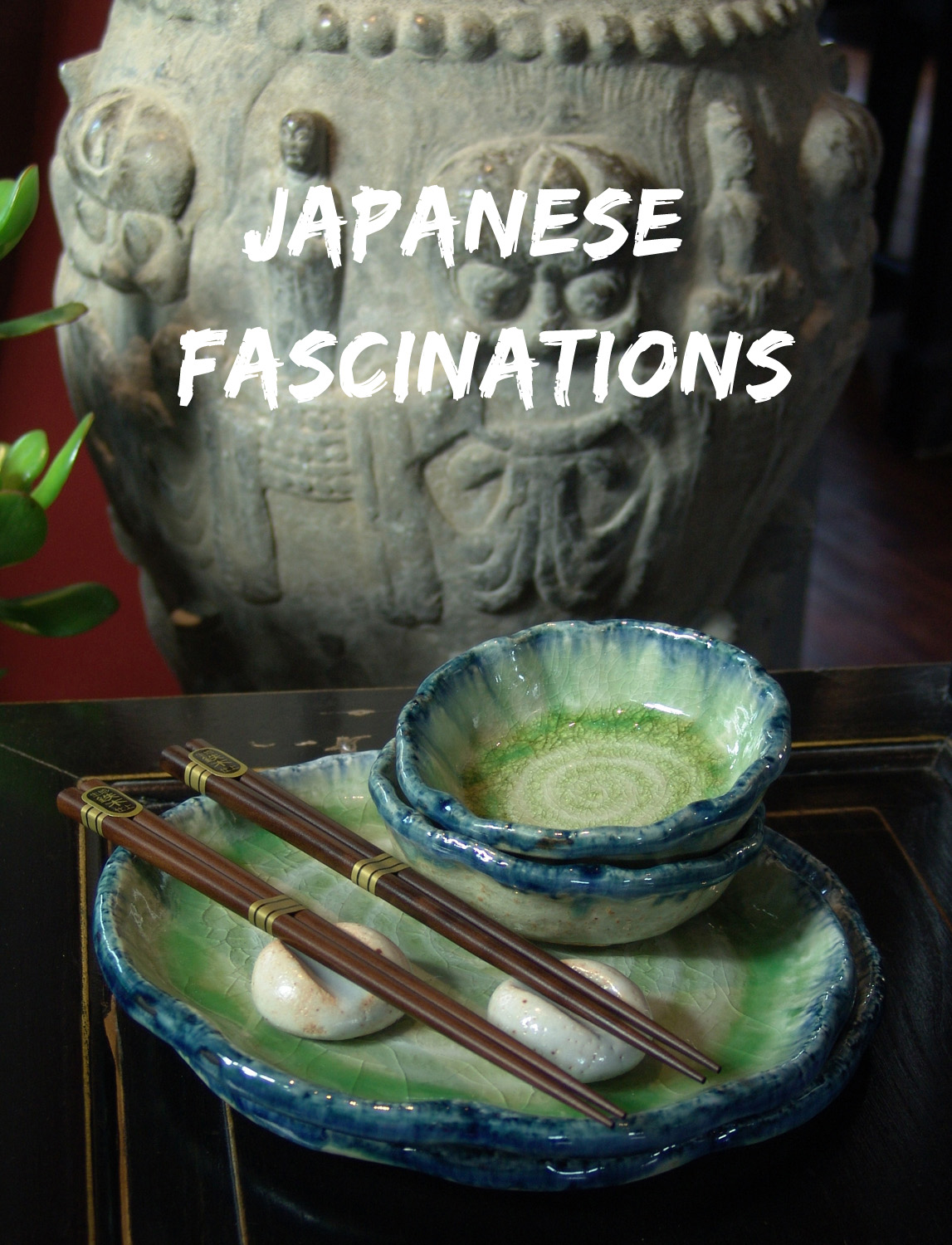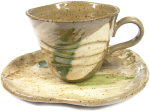Inspirations

Japan has been fascinating artists from all over the world for years. The rich history and traditon of this country, which are present in the lives of its inhabitants to this day, make it possible for artists, regardless of their skin color or language, to create works inspired by them.
Japan, apart from its unique tradition, is also famous for highly developed techniques, martial arts (e.g. karate, aikido, judo, sumo), cuisine (e.g. sushi, sake rice wine, genmeicha green tea), calligraphy, painting (sumi-e) or philosophy (Zen). But that's not all. An important element of Japanese history and aesthetics is also ceramics.
Not everyone knows about it, but Japanese ceramics is one of the oldest in the world and dates back to the 11th millennium BC. Chinese ceramic artists are said to have come to Japan and have had a great influence on the techniques of painting ceramics. Japanese pottery is also said to have been influenced by Korea. It is also true that Japanese ceramics have been exported to Europe, which has made it a huge influence on European ceramics henceforth. Despite many accretions, Japanese ceramics have created its own unique style that inspires ceramics artists all over the world.
Currently, original Japanese ceramics are produced in many regions of Japan. They are very different depending on the place of production. The country has over 50 ceramic towns, and the most famous are Mashiko, Mino, Tokoname, Seto, Kanazawa, Echizen, Kyoto, Shigaraki, Hagi, Bizen, Arita, Karatsu. Each of them has its own history and cultural background. The essence of each of them contributed to the development of pottery with specific characteristics rooted in each of these unique places.
The influence of Japanese history and art is visible in Europe. We have many stationary and online stores that offer ceramics imported from China and Japan. However, passionate stores are still rare, where the philosophy of the East meets the interpretation of Western pottery masters and, as a result, you can buy high-quality ceramics hand-made by a European master. There are few ceramists in Europe who reach for the teachings of Japanese masters and lean like them over every hand-made vessel, doing it with the same concentration and care to pour into every object a piece of their soul and the beauty of the moment in which it is created. Ceramics is a very difficult art that is often, for the artists themselves, unpredictable and full of surprises. Therefore, in order to master it, you must practice your whole life.
Recently, more and more Europeans appreciate Japanese cuisine, especially sushi, which results in a large number of sushi restaurants today. Given that Japanese culture exerts a huge influence on artists in many countries, including Europe, ceramic sushi sets handcrafted by local artists have recently begun to gain recognition. They can have various shapes: rectangular - with raised cones resembling the pagoda roof, leaf-shaped and even round. A reflected natural leaf has become a very interesting motif, thanks to which the dishes refer to nature, which is a source of inspiration for artists, and for buyers - an interesting decorative element of the apartment. When organizing a social event, many people recognize the principle of a nice table setting and display of the served dish, hoping that thanks to these treatments, guests will gain a special appetite and the aesthetic impressions will remain in their memory. An example of this is sushi served on hand-made pottery, which has a natural leaf imprinted on its surface and is glazed in a professional manner.
Japanese patters also have a European interpretation, thanks to which the sensitivity of the East has been enriched with the colorful vibration of the West, bringing a breath of freshness and even more individualism to every handicraft.

Photo: ceramic plate made in Europe, source: www.wabi-style.ch

Photo: Japanese plate, source: www.wabi-style.ch

Japanese art also manifests itself in the tea ceremony, which has a very long tradition in Japan. In Europe, tea is also appreciated, tasty and nicely served. The European market has a very large selection of factory-made tea porcelain from all over the world, especially from China. However, there will also be something for connoisseurs who can purchase the original Japanese set. There aren't many handcrafted Japanese tea sets on the market today, and the ones that do cost a lot. European artists who can create ceramics that a Japanese craftsman would not be ashamed of come to the rescue here.
Photo: tea set made in Europe, source: www.wabi-style.ch
The uniqueness of tea crafts should also be mentioned. High-quality ceramics made by hand are respected due to the soul that the creator breathes into it. With subdued colors, it allows you to concentrate on the company and the delicious taste of tea.

Photo: japanese tea set, source: www.wabi-style.ch 
Another example of handcrafted Japanese-inspired pottery is the incense holder. The kodo incense ceremony has been practiced in Japan for centuries and is subject to a special ritual. By lighting an incense stick, a European thinks mainly about evoking a pleasant atmosphere of relaxation, detachment from everyday life. He can relax and immerse himself in peace while inhaling the aroma of incense. Having a handmade base, he gets more than an object, he gets a piece of art for his home, the roots of which are in Eastern culture.
Photo: hand-made stand for Japanese incense sticks, source: www.wabi-style.ch
Japanese culture and art have long inspired artists from all over the world. Certainly it will take a long time, because few people care for art and tradition so carefully by passing on their knowledge and skills from generation to generation, for many centuries. Wabi-Style is a place in Switzerland where the philosophy of the East meets the interpretation of the pottery masters from the West. The ceramists from Europe who work with us use the teachings of Japanese masters, leaning over each hand-made vessel like them. They do it with the same concentration and concern for pouring into each object a piece of their soul and the beauty of the moment in which it arises. In these works, the sensitivity of the East is enriched with the colorful vibration of the West, bringing a breath of freshness and even more individualism to every handicraft.





